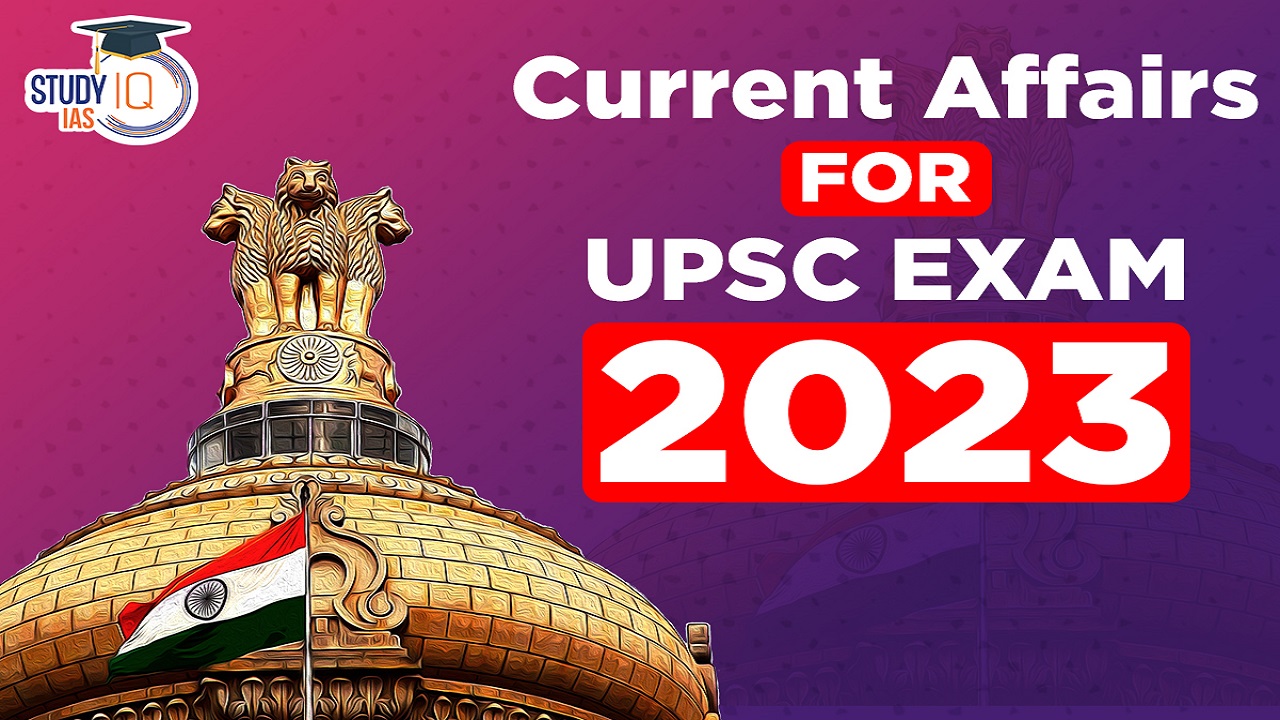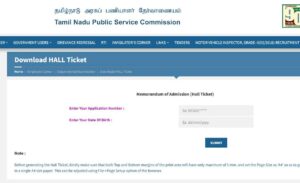Current Affairs 26th May 2023 for UPSC Prelims Exam
Ballistic Missiles
Context: Iran has successfully tested a 2,000-km-range ballistic missile named Kheibar amid wider tensions over nuclear program.
What are Ballistic Missiles?
- Ballistic missiles are powered initially by a rocket or series of rockets in stages but then follow an unpowered trajectory that arches upwards before descending to reach its intended target.
- Warheads: Ballistic missiles can carry either nuclear or conventional warheads.
- Classifications: There are four general classifications of ballistic missiles based on their range, or the maximum distance the missile can travel:
- Short-range: Less than 1,000 kilometers (approximately 620 miles), also known as “tactical” ballistic missiles.
- Medium-range: Between 1,000 and 3,000 kilometers (approximately 620-1,860 miles), also known as “theater” ballistic missiles.
- Intermediate-range: Between 3,000 and 5,500 kilometers (approximately 1,860-3,410 miles)
- Long-range: More than 5,500 kilometers (approximately 3,410 miles), also known as intercontinental or strategic ballistic missiles.
- Advantages:
- Ballistic missiles are weapons that can destroy targets with precision.
- They have the advantage of high speed.
- They can be easily launched from every platform.
- They cannot be easily detected by air defense systems contrary to other airplatforms.
- Ballistic missiles can use solid- or liquid- propellant rocket propulsion systems.
Kheibar Ballistic Missile
- Iran has successfully test-launched a ballistic missile with a potential 2,000-km range.
- It is capable of carrying 1,500 kg of warheads. It is a liquid-fuel missile.
- Updated Version: Kheibar is an upgraded version of Iran’s Khoramshahr 4 ballistic missile with a range of 2,000 km (1,243 miles) and capable of carrying a 1,500-kg (3,300-pound) warhead.
- Features: The domestically-built Kheibar missile’s outstanding features include quick preparation and launch time, which makes it a tactical weapon in addition to a strategic one.
- The new propellant also requires smaller tanks.
- It has more advanced engine.
- The airframe is also made of a stronger composite material.
- Its mid-phase navigation system enables it to correct its course when outside the Earth’s atmosphere which means it is not reliant on terminal guidance that can be disrupted by electronic warfare systems.
- This missile can evade radar detection and penetrate enemy air defence systems due to its low radar signature.
- The missile has the capability to utilize various warheads for different missions.
India’s Ballistic Missiles

Current Affairs 25th May 2023 for UPSC Prelims Exam
People’s Biodiversity Register
Context: The National Campaign for Updation and Verification of People’s Biodiversity Register (PBR) has been launched in Goa, marking a significant step towards the documentation and preservation of India’s rich biological diversity.
What is People’s Biodiversity Register (PBR)?
- The People’s Biodiversity Register serves as a comprehensive record of various aspects of biodiversity, including the conservation of habitats, preservation of land races, folk varieties and cultivars, domesticated stocks and breeds of animals, micro-organisms, and the accumulation of knowledge related to the area’s biological diversity.
- PBR in Every Village: There is a plan to set up PBR in every village in India under Mission LiFE (lifestyle for environment) which is conceived to conserve the planet earth through mindful utilisation of natural resources.
- Significance: PBR is considered as the first step towards bridging the gap between intellectual property rights of local people and benefits derived from genetic resources and associated traditional knowledge and enabling them to share those benefits.
What are Biodiversity Management Committees?
- Definition: As per the Biological Diversity Act 2002, Biodiversity Management Committees (BMC) are created for “promoting conservation, sustainable use and documentation of biological diversity” by local bodies across the country.
- BMCs have been constituted by the local bodies in the States and Union Territories.
- Function: They are entrusted with preparation of the People’s Biodiversity Registers (PBRs), in consultation with local communities.
What is Mission LiFE (Lifestyle for Environment)?
- Definition: Led by India, mission LiFE is a global plan of action that aims to save the planet from the disastrous consequences of climate change.
- Vision: This mission envisions replacing the prevalent ‘use-and-dispose’ economy with a circular economy.
- Objective: It aims to promote an environmentally conscious lifestyle that focuses on ‘mindful and deliberate utilisation’ instead of ‘mindless and wasteful consumption’.
Forum Shopping
Context: Recently, Chief Justice of India (CJI) said that he will not permit ‘forum shopping’.
About Forum Shopping
- When litigants or lawyers attempt to deliberately move their case to a particular judge or Court where they think the judgment could be more favourable, they are said to be “forum shopping.”
- Litigants and lawyers often consider this strategy as part of their litigation plan.
Bench Hunting
- It refers to petitioners managing to get their cases heard by a particular judge or bench to ensure a favourable order.
Advantages of Forum Shopping
- It can allow plaintiffs to seek justice and compensation in a court that is more sympathetic to their claims or interests.
- It can encourage competition and innovation among courts and judges to improve their efficiency and quality of service.
Disadvantages of Forum Shopping
- It can lead to injustice for the opposing party and create an imbalance in the workload of different courts and might overburden some courts over others.
- It can undermine the authority and legitimacy of courts and judges by creating perceptions of bias or favouritism.
- It can increase the costs and complexity of litigation by creating conflicts of laws and multiple proceedings.
Courts on Forum Shopping
- The Supreme Court in its 1988 ruling in ‘Chetak Construction Ltd. vs. Om Prakash’ said, “A litigant cannot be permitted choice of the forum,” and that every attempt at forum shopping “must be crushed with a heavy hand.”
- In ‘Union of India & Ors. vs Cipla Ltd.’, Supreme Court laid down “functional test” to be adopted for forum shopping.
- According to a Supreme Court judgment in the case of ‘Vijay Kumar Ghai vs. State of W.B.’ 2022, forum shopping is a “disreputable practise by the courts” that “has no sanction and paramountcy in law”
- The SC further stated that a classic example of ‘forum shopping’ is when a litigant approaches one court but does not get desired relief and then approaches another court to obtain relief in the same matter.
- On April 26, 2022, the Jodhpur Bench of the Rajasthan High Court in the case of ‘Dhanwantri Institute of Medical Science vs. The State of Rajasthan’ upheld an order imposing costs worth 10 lakh rupees on a party for engaging in forum shopping.
Global Practices
- Forum shopping has also been criticised by the US and UK courts.
- Most common law countries use the ”forum non-conveniens” principle to prevent forum shopping.
- It gives the court discretionary powers to refuse to exercise its jurisdiction over a matter where another court, or forum, may more conveniently hear a case.
New Development Bank (NDB)
Context: New Development Bank (NDB), established by the BRICS group, is moving away from the US dollar in international trade.
More on the News:
- The move aims to reduce dependency on the US dollar and help BRICS countries avoid foreign exchange risks and financial shortages.
- Bank plans to provide 30% of loans in the local currencies of its member nations.
About New Development Bank (NDB)
- It is a multilateral financial institution set up by the five BRICS (Brazil, Russia, India, China, South Africa) countries in 2015.
- New Development Bank, earlier called BRICS Development Bank, aims to finance public and private projects through loans, guarantees and equity participation.
- Objective: It was established with the purpose of mobilising resources for infrastructure and sustainable development projects in BRICS and other emerging market economies and developing countries.
- NDB’s work complements the efforts of multilateral and regional financial institutions, toward global growth and development.
- Headquarters: Shanghai, China.
- In 2018, the NDB received observer status in the United Nations General Assembly, establishing a firm basis for active and fruitful cooperation with the UN.
- In 2021, NDB initiated membership expansion and admitted Bangladesh, Egypt, United Arab Emirates and Uruguay as its new member countries.
- India’s K.V. Kamath was elected the first president of the bank.
Special Protection Group (SPG)
Context: Recently, Special Protection Group (SPG) Rules, 2023 were released by the Ministry of Home Affairs under the Special Protection Group Act, 1988.
New Rules:
- SPG will be headed by an officer not less than the rank of an additional director general belonging to the Indian Police Service.
- As per SPG Rules, 2023, the general superintendence, direction, command and control, supervision, training, discipline, and administration of the force will be vested in the director.
- It empower the Central government to frame standard operating procedures (SOP) to be followed by State governments or Central government departments, Army, diplomatic missions, and local or any civic authority to aid the SPG in performing its duties.
About Special Protection Group
- The agency was formed by Special Protection Group Act, 1988.
- SPG was started in 1985 in the wake of the killing of PM Indira Gandhi in 1984.
- Mandate: SPG is responsible for the safety and security of the prime minister.
- The SPG protects the prime minister at all times both in India and abroad, as well as his immediate family members residing with them at their official residence.
- After 2019 Amendment to SPG Act, SPG protection is granted only to the prime minister of India.
- SPG Act mandates various central and state government ministries, departments and other central and state agencies to assist the Special Protection Group whenever required.
- SPG draws its personnel — both men and women — from the Central Armed Police Forces (such as the Border Security Force, Central Reserve Police Force, Central Industrial Security Force, the Indo-Tibetan Border Police) and the Railway Protection Force Service.
- They are all volunteers — the best of the best, who are selected after a rigorous, three-tier screening process.
- Members of the SPG, except the All India services officers, shall be appointed on deputation for an initial period of six years.
- Headquarters in New Delhi.
Various categories of security in India
- Z+ category: It is the second highest category of security provided to VVIPs, VIPs or high-risk individuals in India.
- The Z+ level of security is given by National Security Guard/ Black Cat Commandos.
- A Z+ category security cover comprises 55 personnel, including more than 10 NSG commandos and police personnel.
- Z category: This is the third highest category of security cover for any individual in India.
- It comprises 22 personnel, including between 4-6 NSG commandos and police personnel.
- Y+ category: This kind of security cover consists of 11 personnel, including 2-4 commandos and police personnel.
- Y category: In this type of security cover, there are 8 security personnel, including 1 or 2 commandos and police personnel.



 TNPSC Group 4 Admit Card 2025 Out at tnp...
TNPSC Group 4 Admit Card 2025 Out at tnp...
 Species Added to India's Flora and Fauna...
Species Added to India's Flora and Fauna...
 Daily Quiz 02 July 2025
Daily Quiz 02 July 2025





















